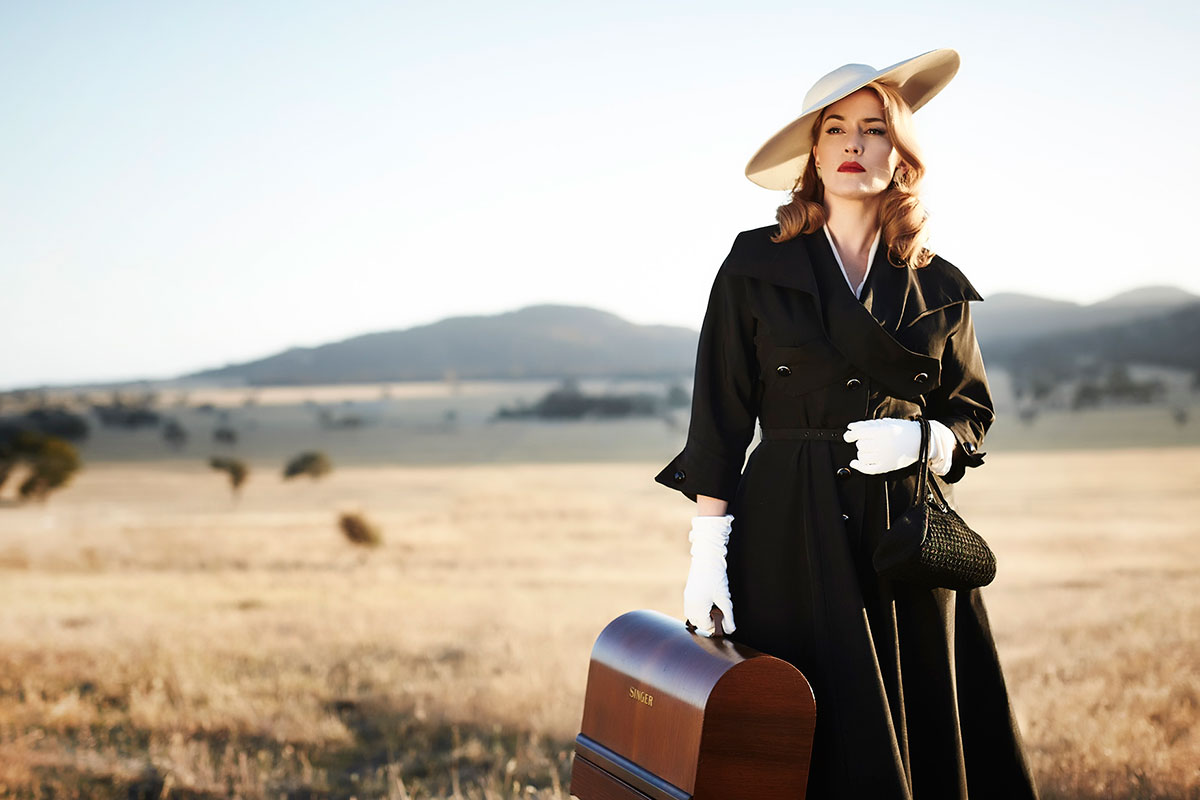
The Dressmaker opened number one at the box office when it was released in Australia back in 2015, and became the second highest-grossing Australian film of the year, and eleventh highest-grossing film of all time at Australian box office. The film led the 5th AACTA Awards with thirteen nominations, including Best Film, Best Direction, Best Production Design, Best Original Music Score, Best Sound, Best Editing, Best Cinematography and won Best Lead Actress, Best Supporting Actress, Best Supporting Actor, Best Costume Design and People’s Choice Award for Favorite Australian Film. Now that The Dressmaker has made its way Stateside, American audiences have the chance to see what the hubbub is about. Unfortunately, it doesn’t quite live up to the Aussie hype.
Kate Winslet plays Tilly, a successful dressmaker who returns to her home in the Australian outback to face some childhood demons, and reconcile with her mentally ill mother (Judy Davis). Her return brings an upheaval to the small town, who has not forgiven her for the death of a young boy named Stewart twenty five years earlier, for which Tilly was blamed. However, once Tilly’s dressmaking skills are discovered, the women in town turn to her for help.
The film is based on the novel of the same name by Rosalie Ham, and while the shift in tone through the story may work in a lengthy novel form, it unfortunately does not condensed into two hours. The story of Tilly’s investigation into the death of Stewart, and the effect it had on not just on her, but on her mother and the town as well, is engaging, and warranted more attention. Instead, it’s treated as a side story to the light hearted antics of the town people, and their response to Tilly’s dressmaking skills.
The Dressmaker as a whole is enjoyable, and boasts some strong performances, particularly from Winslet, Davis, and Hugo Weaving (on familiar ground here). However, it’s unevenness is problematic. The comedy is light, almost whimsical, which is not strong enough to counterbalance the darker tones. To even further muddy the waters, the film manages to conclude as a dark comedy. I was reminded of Wayne Wang and Paul Auster‘s 1995 films Smoke and Blue in the Face. Smoke, a multi-character drama centered around a Brooklyn cigar store, was followed up by the improvised comedy Blue in the Face, featuring many of the same characters. Had filmmaker Jocelyn Moorhouse separated these two stories into two separate films, I believe each would have benefited strongly. But together, neither really hold up.

